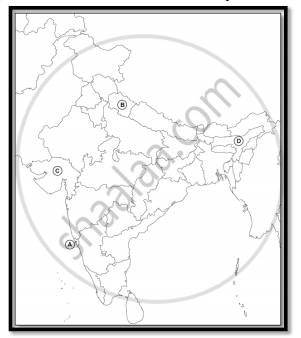Advertisements
Advertisements
प्रश्न
Which three major developments took place in Indian politics during the last decade of the 20th century? Describe.
उत्तर
The Prime Minister Atal Bihari Vajpayee announced two broad goals which the government would set for itself. First, by 2010, the per capital income of India would be doubled. Income doubling within a decade requires annual growth in per capita income of 7% per annum. Second, by 2010, there would be universalisation of education until Class VIII, with a special effort for girls and disadvantaged groups. In response to the goal of attaining universal elementary education by 2010, the government launched the SSA and began investing vast sums of money for expanding school coverage capacity building, mid-day meals and free school books for children of families living below the poverty line. Besides these, many other initiatives were taken for the welfare of the citizens of the country.
APPEARS IN
संबंधित प्रश्न
In the given political map of India, four places are marked as A, B, C and D. Identify them with the help of information given below and write their correct names in the answer-book along with their serial numbers and the alphabets concerned:

i. The State related to Chipko Movement.
ii. The State where a special opinion poll was held asking people to decide if they wanted to merge with Maharashtra or remain separate.
iii. The State out of which the States of Meghalaya, Mizoram and Arunachal Pradesh were created.
iv. The State related to Narmada Sagar project.
Study the passage the given below and answer the following questions that follow:
Sardar Sarovar project is a multipurpose mega-scale dam. It required relocation of around two and a half lakh people from the villages. Issues of relocation and proper rehabilitations of the project-affected people were first raised by the local activist group. It was around 1988-89 that the issues crystallized under the banner of the NBAa loose collector of local voluntary organization.
Question:
i. Why is the Sardar Sarovar Project mentioned as multipurpose mega-scale dam?
ii. Why was it opposed by the villagers?
iii. Name the organizations which led the movement against this project
iv. What was the main demand of the local activist group?
Why and how did the Mizo Movement for succession gain popular support?
Identify the most important outcome of the Rio Summit.
Read the above passage carefully and answer the following questions:
The Naxalite Movement has used force to snatch land from the rich landowners and give it to the poor and the landless. Its supporters advocated the use of violent means to achieve their political goals. In spite of the use of preventive detention and other strong measures adopted by the West Bengal government..., the Naxalite Movement did not come to an end. In later years, it spread to many other parts of the country.
- Why did Naxalite prefer to use violence?
- Assess the positive role of the Naxalite Movement in spite of using violence?
- Suggest any two measures to contain this movement.
What was Chipko movement?
Differentiate between Modernization and Westernization as developmental goals
What was Narmada Bachao Andolan? What were its main issues? What democratic strategy did it use to put forward its demands?
